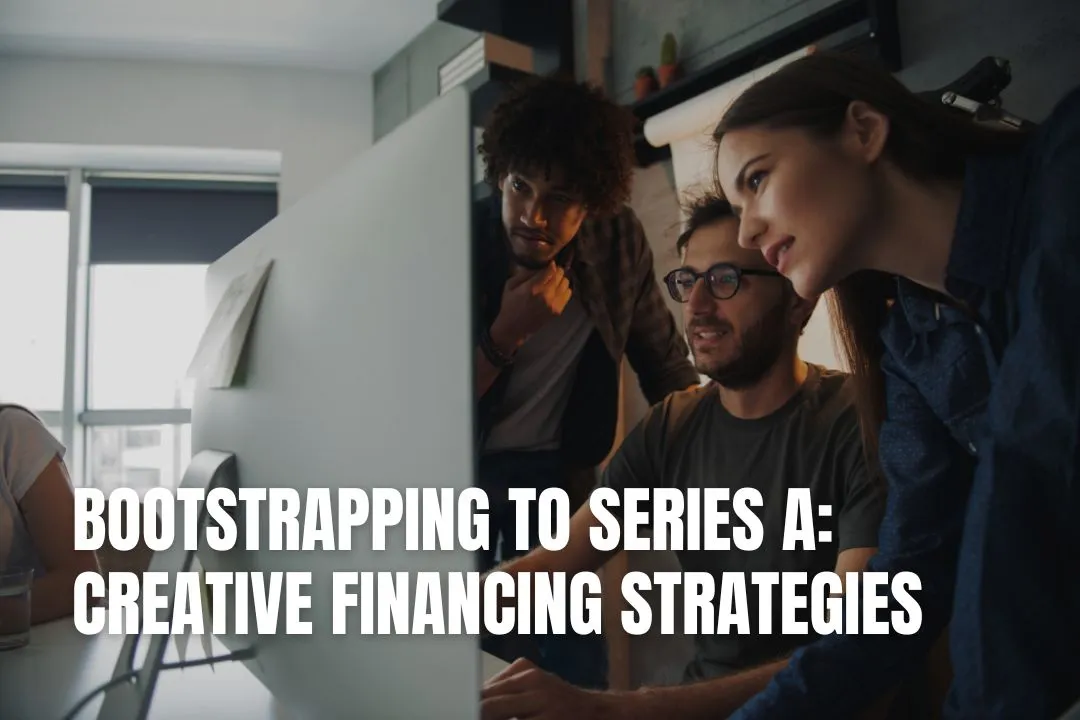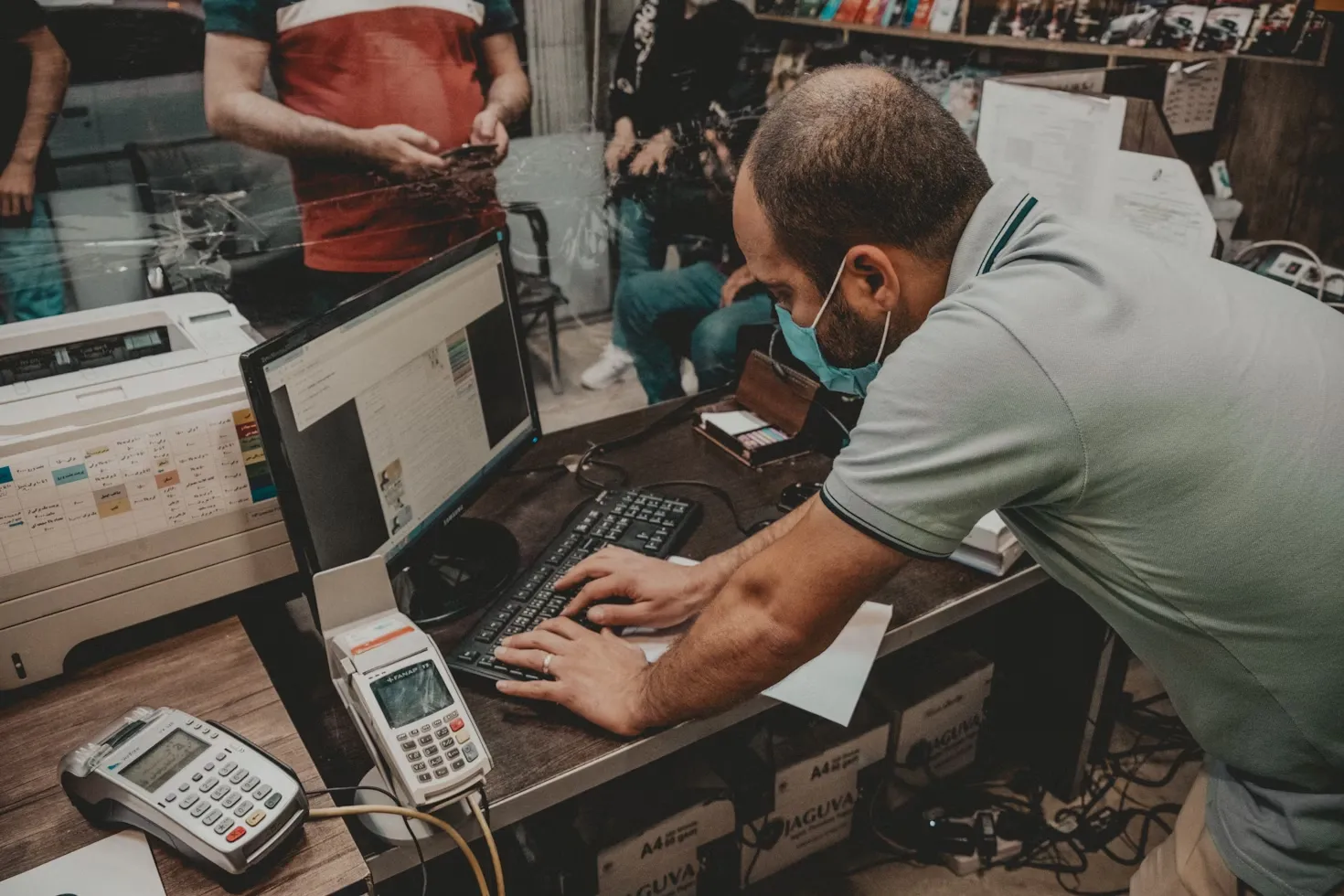
The space between bootstrapping and Series A is where most startups die. It's not dramatic, no sudden implosion or spectacular failure. Just a slow drain of resources while founders desperately seek product-market fit.
Today's Series A investors want proven traction. We're talking $1-2 million in annual recurring revenue minimum, strong unit economics, and clear growth trajectories. That's a massive leap from zero.
But here's what separates successful founders from the rest: they don't wait for perfect conditions. They find creative ways to bridge the funding gap using tools and strategies that didn't exist five years ago.

Before discussing tactics, we need to address an uncomfortable truth. The journey from bootstrap to Series A will test you psychologically in ways you can't anticipate.
You'll face months where payroll seems impossible. Competitors with funding will move faster. Key employees will leave for better-paying opportunities. Your personal relationships will strain under the pressure.
This isn't pessimism, it's preparation. Understanding the mental challenge helps you build resilience before you need it.
Successful bootstrappers share one trait: they keep moving forward when logic suggests they should quit. It's not about blind optimism. It's about breaking impossible-looking challenges into manageable daily actions.
Think about extreme endurance challenges for a moment. Adventurers like Rob Lilwall, who walked from Siberia to Singapore, don't focus on the thousands of miles ahead. They focus on the next step, the next day, the next checkpoint.
The parallel to startup bootstrapping is obvious. You can't obsess over the million-dollar revenue target. You focus on the next customer, the next feature, the next small win that moves you forward.
Founders who successfully bootstrap to Series A develop specific mental habits. They celebrate small wins religiously: a new customer, a successful product launch, a positive review. These aren't participation trophies; they're fuel for the long journey ahead.
They also build support networks before a crisis hits. Other founders, advisors, even therapists - people who understand the unique pressure of building something from nothing.
Time boxing worry is another crucial skill. Set aside 30 minutes daily for financial anxiety, strategic concerns, and competitive analysis. Outside that window? Focus on execution.
Some founders find that physical challenges help mental resilience. Running, martial arts, and rock climbing - activities that require pushing through discomfort. The confidence from physical achievement transfers to business challenges.
Remember, every successful company started with founders who felt overwhelmed. Amazon ran on door desks. Airbnb sold cereal to stay afloat. Your current struggles aren't signs of failure - they're prerequisites for success.

Once your mental game is solid, it's time to get ruthless about burn rate. Every dollar saved extends your runway and pushes back the point where you need outside capital.
The biggest mistake founders make? Optimising small expenses while ignoring major cost centres. Switching from premium to free Slack saves $50 monthly. Rethinking your entire operational structure saves thousands.
Start with your largest expense category, usually people. I'm not suggesting you underpay, but get creative with compensation structures. Offer higher equity for lower salaries. Hire senior people part-time instead of full-time. Build teams in lower-cost regions.
Virtual infrastructure has eliminated massive traditional startup costs. Cloud services mean no server rooms. Remote work means no office overhead. Digital tools replace expensive enterprise software.
Office space used to be non-negotiable. You needed somewhere to work, meet investors, and build culture. Now it's a strategic choice with multiple options.
Starting fully remote saves the most money, obviously. But it comes with hidden costs, harder recruiting, slower culture development, and Zoom fatigue that kills creativity.
The hybrid model offers interesting possibilities. Work remotely but meet weekly at flexible spaces. In Singapore, for instance, The Work Project at Great World City offers day passes and meeting rooms without long-term commitments. You get professional space for investor meetings without bleeding cash monthly.
Some startups negotiate creative arrangements. Offer your services in exchange for space. Partner with established companies that have excess capacity. Even universities sometimes provide free space for promising startups.
The key is matching your workspace strategy to your actual needs, not your ego. That corner office feels good, but it kills your runway.
Traditional hiring wisdom says hire slow, fire fast. Bootstrapped startups need different rules: hire flexible, compensate creatively.
Contractors and freelancers provide specialised skills without long-term commitment. Yes, the hourly rate is higher, but you're not paying for downtime, benefits, or recruitment costs.
Equity compensation becomes your secret weapon. Early employees who believe in your vision will accept significant salary cuts for meaningful ownership. Just structure it properly, and vesting schedules protect everyone involved.
Consider apprenticeship models. Hungry junior talent, properly mentored, can outperform expensive senior hires. Universities have programs connecting startups with students seeking real experience.
International talent arbitrage remains underutilised. A senior developer in Eastern Europe or Southeast Asia costs half their Silicon Valley equivalent. Time zones create challenges, but modern collaboration tools make it manageable.

When you do spend, make it count. Invest in force multipliers, tools and systems that make your team exponentially more productive.
Automation tools that save hours weekly. Quality design that reduces customer acquisition costs. Legal templates that prevent expensive mistakes. These aren't expenses; they're investments with measurable ROI.
Track everything obsessively. Know your burn rate daily, not monthly. Understand unit economics at granular levels.
Traditional venture capital grabs headlines, but smart founders know it's just one option among many. The proliferation of alternative funding mechanisms has democratized access to capital.
Revenue-based financing has exploded recently, and for good reason. Instead of selling equity, you repay investors through a percentage of monthly revenue. No board seats, no control issues, just aligned incentives around growth.
The terms vary wildly, from 3% to 10% of revenue until you've repaid 1.5x to 3x the original amount. It's expensive capital, but you keep full ownership. For businesses with predictable revenue, it's often superior to equity dilution.
Government grants remain massively underutilised. Every major economy offers innovation funding, yet most founders never apply. Yes, the paperwork is painful. But we're talking about free money - no equity, no repayment.
Research which agencies fund your sector. Craft applications that speak their language, job creation, innovation, and economic development. Hire grant writers if necessary; their fees pale compared to potential funding.
Here's the controversial reality: many successful founders use personal capital to bridge critical gaps. It's risky, sure, but sometimes necessary.
Credit cards funded many iconic startups. The founders of Airbnb famously maxed out dozens of cards to stay afloat. High interest rates hurt, but if it's genuinely short-term bridge financing, the math can work.
Personal loans offer better terms than credit cards. In Singapore, platforms like SingSaver let founders compare rates across multiple banks instantly. Some professionals qualify for unsecured loans up to $200,000 at rates below 6% annually.
The key is treating personal financing as strategic bridge capital, not desperation funding. Have clear repayment plans tied to business milestones. Never borrow more than you could repay if the startup failed.
Home equity lines provide another option for property owners. Lower rates than personal loans, though obviously higher risk. Some founders refinance properties to unlock capital without selling equity. Planning to use your home’s equity for financing? Online platforms like SuperMoney make it easy to compare lenders, interest rates, and terms side by side so you can find the best fit for your needs.

Equity crowdfunding has matured beyond Kickstarter rewards. Platforms now enable actual investment from non-accredited investors, democratizing startup funding.
The benefits extend beyond capital. Your investors become brand ambassadors, product testers, and network amplifiers. Consumer brands especially benefit from having customers as literal shareholders.
Community rounds work best when you have existing traction. Nobody invests in ideas anymore; they invest in momentum. Show growth, engagement, and vision, then let your community participate in the upside.
International crowdfunding opens additional possibilities. Different platforms specialise in different sectors and geographies. Research which platforms align with your business model and target market.
The smartest founders don't choose one funding source; they stack multiple options strategically. Revenue-based financing for inventory, grants for R&D, and personal loans for short-term gaps.
This portfolio approach reduces dependence on any single source. It also provides negotiating leverage. When you're not desperate for one specific deal, terms improve dramatically.
Just remember that complexity has costs. Managing multiple funding sources requires sophisticated financial planning. Make sure your accounting systems can handle it.
After creatively financing your way to traction, you'll eventually need institutional capital to scale. Series A isn't just bigger money, it's a completely different game with specific rules.
Modern Series A investors obsess over metrics. Not vanity metrics like total users or downloads, but hard economics: customer acquisition cost, lifetime value, gross margins, and retention rates.
The magic number is typically $100K in monthly recurring revenue, growing 15-20% month-over-month. But growth consistency matters more than absolute numbers. Three months of steady 15% beats sporadic spikes followed by flatlines.
Build your data room before you need it. Financial statements, customer contracts, intellectual property documentation, cap table, organise everything meticulously. When investors express interest, you want to move fast.
Most founders raise too late, when desperation shows. The ideal time? When you have a 9-12 months runway and clear momentum. This gives you negotiating leverage and time to find the right partner.
Seasonality affects fundraising more than people admit. September through November sees maximum activity. January brings fresh fund deployments. August and December? Dead zones where partners vacation.
Market conditions matter too. When public markets crash, private valuations follow with a six-month lag. When competitors raise big rounds, investors fear missing out. Time your process accordingly.

Nothing drives valuations like multiple term sheets. But orchestrating competition requires careful planning and flawless execution.
Start relationship building six months early. Send monthly updates to 30-50 potential investors. Share wins, acknowledge challenges, and demonstrate thoughtful leadership. Let them watch you execute in real-time.
When ready to raise, compress your process. Schedule all first meetings within two weeks. Create natural urgency without being pushy. "We're meeting firms through the month-end and hoping to decide by..."
Partner dynamics matter more than firm brands. The person leading your deal becomes your board member for years. Chemistry, experience, and network matter more than marginally better terms.
The biggest mistake? Optimising for valuation over fit. An extra 20% dilution with the right partner beats perfect terms with the wrong one.
Clean up your cap table before approaching Series A investors. If you've taken money from dozens of angels using different instruments, consolidate them. Use special-purpose vehicles to simplify ownership.
Watch out for toxic terms from early investors. Super pro-rata rights, board seats for small investors, or consent requirements can kill Series A deals. Renegotiate these before going to market.
Don't forget about employee options. Series A investors want to see 15-20% allocated for team growth. If your option pool is depleted, refresh it before raising.
Every startup's funding journey looks different. Maybe you'll bootstrap to profitability. Perhaps you'll stack alternative financing until Series A. Possibly you'll skip the traditional venture entirely.
The key is understanding all available options, then choosing deliberately based on your specific situation. Don't default to conventional wisdom. Design a funding strategy that aligns with your vision, values, and goals.
Remember: capital is a tool, not a goal. Focus on building something valuable. The funding will follow.
Before you even think about finances, you need to build your mental foundation. The journey is psychologically demanding, so developing resilience, creating support networks, and learning to manage stress are the most important first steps for success.
You can adopt a fully remote model to eliminate office overhead completely. Alternatively, a hybrid approach using flexible workspaces for key meetings gives you a professional presence without the commitment of a long-term lease. This is a core part of modern, creative financing strategies.
Revenue-based financing is a great option where you repay investors with a percentage of your revenue instead of equity. Also, government grants are essentially free money, as they don't require repayment or giving up any ownership in your business.
While many metrics are important, a common benchmark is reaching £100,000 in monthly recurring revenue (MRR). More importantly, investors want to see consistent month-over-month growth of around 15-20%, as this demonstrates a predictable and scalable business model.
Using personal funds, like credit cards or loans, can be a valid short-term solution to bridge a critical funding gap. The key is to treat it as strategic capital with a clear repayment plan tied to business milestones, not as a desperate move. Never borrow more than you could afford to lose if the business were to fail.